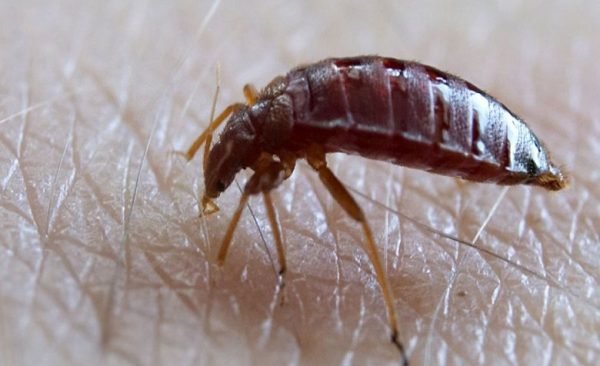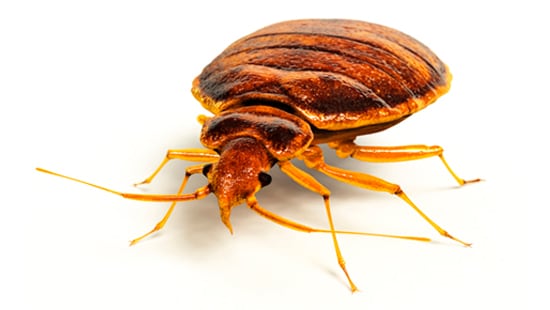Get Educated Concerning the Kinds of Parasite Control Methods and Their Benefits for House Owners
Recognizing the different parasite control methods available to house owners is necessary for efficient pest management. House owners who are knowledgeable can make strategic options that not only address parasite problems however likewise improve the total quality of their living atmosphere.
Chemical Pest Control Approaches
Chemical pest control approaches are a vital component of incorporated insect administration methods for property owners seeking effective options to pest invasions. These techniques entail the application of chemical substances designed to eliminate or discourage bugs that threaten personal residential property, health and wellness, and comfort. Usual chemicals utilized include insecticides, fungicides, rodenticides, and herbicides, each tailored to target particular bugs.
The main benefit of chemical bug control is its fast performance; numerous formulations provide prompt outcomes, reducing pest populations substantially in a short time. In addition, advances in chemical solutions have led to items that are extra environmentally pleasant and have lower toxicity degrees for non-target microorganisms when applied appropriately.

Organic Insect Control Techniques
All-natural insect control techniques have obtained prominence as house owners look for safer and more lasting alternatives to typical chemical strategies. Organic parasite control techniques make use of natural killers, bloodsuckers, or microorganisms to manage insect populaces successfully. This technique is not only eco-friendly yet likewise lessens the risk of injury to non-target types, consisting of useful pests and wild animals.
Among one of the most usual biological control methods involves introducing natural killers right into the setting. For instance, ladybugs can be made use of to manage aphid populaces, while nematodes target soil-dwelling parasites like grubs. Furthermore, parasitoids-- microorganisms that reside on or within a host-- can be used to regulate specific insect types by laying eggs inside them, eventually leading to their death.
Another method is the usage of biopesticides, which are derived from natural products such as plants, germs, or minerals (bed bug exterminator). These items can efficiently target bugs while posturing minimal danger to animals and human beings. In general, biological bug control strategies give homeowners with an efficient ways of parasite administration that lines up with eco-friendly concepts, advertising a healthier living setting while lowering reliance on synthetic chemicals
Mechanical Bug Control Approaches
Mechanical parasite control strategies incorporate a selection of methods that physically prevent or eliminate pests without using chemicals. These strategies are specifically useful for home owners seeking ecologically friendly alternatives while guaranteeing the security of their space.
One usual method is using barriers, such as displays, nets, and catches, which protect against parasites from entering homes or details areas. For instance, installing window screens can effectively maintain insects out, while making use of physical barriers around yards can deter bigger parasites like deer or rabbits. Additionally, mechanical traps created for rodents can catch and get rid of these insects without the demand for poisonous materials.
Another efficient technique involves making use of vacuums and mops to eliminate bugs straight from surfaces. Normal cleaning and upkeep can considerably minimize insect populaces by eliminating food resources and hiding places. In addition, using gadgets like ultrasonic pest repellents can deter numerous pests through acoustic wave that are undesirable to them yet inaudible to human beings.
Social Insect Control Practices
Cultural pest control methods concentrate on customizing the setting and monitoring strategies to create conditions that are less for pest infestations. These techniques are fundamental in maintaining a well balanced environment and reducing the dependence on chemical interventions. By changing farming techniques, home owners can efficiently prevent pests while promoting plant health.
One typical method includes crop rotation, which disrupts the life process of bugs by changing the kinds of plants grown in a particular location (bed bug exterminator). This not just minimizes pest populations but also enhances soil health and wellness. Additionally, intercropping-- planting diverse crops in proximity-- can puzzle pests Find Out More and reduce their ability to situate their favored host plants
Water management is an additional essential element of cultural techniques. Appropriate watering methods can stop standing water, which acts as a breeding place for mosquitoes and other bugs. Maintaining tidiness in and around the home, such as frequently getting rid of debris and food waste, can substantially lower parasite attraction.
Including these cultural techniques right into an extensive parasite management strategy permits homeowners to develop an environment that naturally hinders insects, therefore enhancing the effectiveness of other control approaches while promoting sustainable horticulture and landscape design.

Integrated Bug Management Approaches
Integrated Parasite Monitoring (IPM) represents an all natural technique that integrates numerous methods to effectively handle insect populations while minimizing environmental impact. This approach incorporates biological, social, physical, and chemical methods to attain sustainable bug control. By assessing pest populations and their all-natural adversaries, IPM emphasizes tracking and recognizing insects before implementing control procedures.
Among the core concepts of IPM is using limits, which establish the degree of parasite task that warrants intervention. This ensures that treatments are used only when needed, reducing the reliance on chemical pesticides. Biological control methods, such as presenting all-natural predators or bloodsuckers, job in combination with social techniques like plant rotation and habitat adjustment to interrupt pest life cycles.
Moreover, IPM encourages using least-toxic chemical options when intervention is essential, focusing on products that posture marginal risk to non-target microorganisms and the atmosphere. For home owners, embracing IPM comes close to not just enhances the efficiency of More Help pest administration but additionally promotes a much healthier living atmosphere, fostering biodiversity and minimizing chemical direct exposure. Eventually, IPM empowers house owners to make informed decisions that stabilize parasite control with environmental duty.
Final Thought
In conclusion, recognizing the different insect control approaches equips homeowners to make educated decisions regarding pest administration. Each technique-- chemical, organic, mechanical, social, and integrated insect administration-- supplies distinctive benefits that cater to different needs and preferences.
Comprehending the numerous insect control approaches readily available to property owners is crucial for reliable pest monitoring.Chemical insect control techniques are an essential part of integrated insect management methods for property owners seeking effective options to pest problems. Generally, biological parasite control methods give home owners with a reliable ways of parasite monitoring that aligns with eco-friendly concepts, promoting a much healthier living setting while lowering reliance on synthetic rodent control chemicals.
Social bug control methods concentrate on customizing the environment and monitoring methods to develop conditions that are much less conducive to pest invasions.In verdict, recognizing the different parasite control methods encourages home owners to make enlightened choices regarding pest administration.